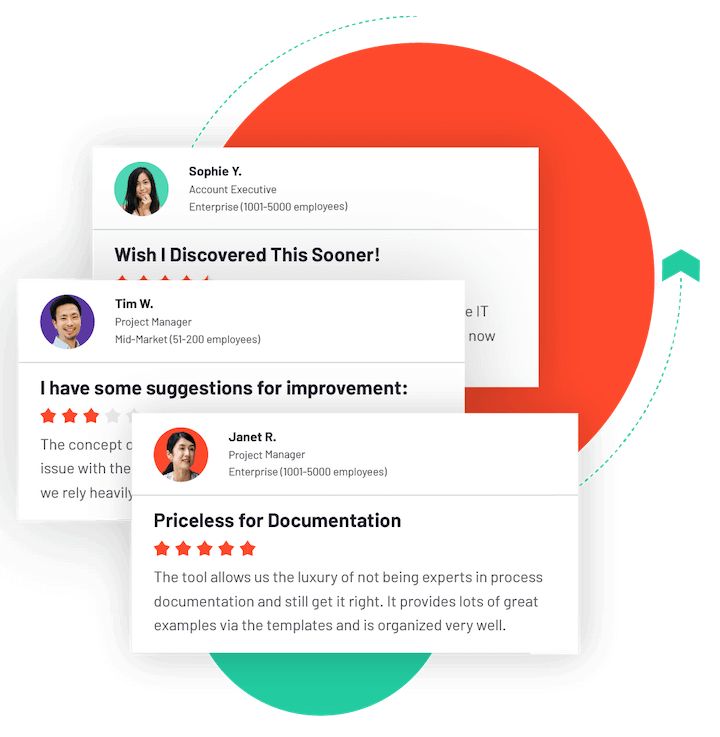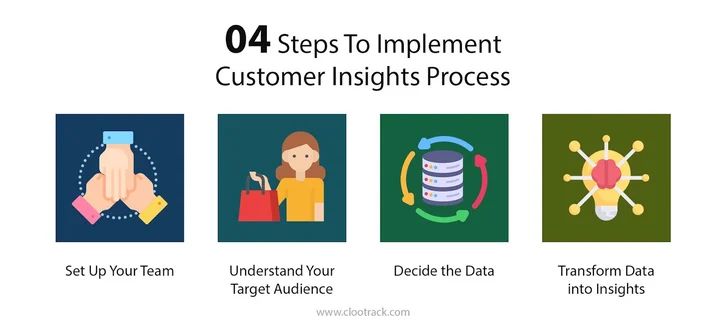What is Customer Insight?
Customer Insight, or "Customer Understanding," is the process of analyzing customer behavior trends and feedback to gain a deep understanding of their motivations and purchasing decisions. It is not just easily visible information but rather underlying factors, hidden desires, and latent needs that need to be uncovered from customer data and behavior.

To effectively gather Customer Insight, businesses need to use both quantitative and qualitative data from sources such as website metrics, social media, market research, and customer analysis. This approach allows businesses not only to identify trends and behavioral patterns but also to uncover deeper motivations driving consumer behavior.
Additionally, the Vietnamese marketing community refers to insight as “Sự thật ngầm hiểu” (Implicit Truths)—those unclear yet powerful perceptions and motivations that significantly impact customer decisions and behaviors. By harnessing these insights, businesses can adjust strategies, develop products and services, enhance customer experiences, and create real value for both parties.
Why is the Influence of Customer Insight Important for Businesses?
Customer Insight serves as a compass that helps businesses make informed decisions, develop products and services, and connect deeply with their target audience. What makes these insights so valuable?
- Strategic Decision-Making: By analyzing customer motivations, preferences, and pain points, businesses can make strategic decisions aligned with market needs. Whether launching a new product or adjusting marketing strategies, insights ensure that actions are data-driven.
- Risk Mitigation: Entering unfamiliar areas can be a costly gamble. Customer Insights act as a safety net, reducing the risks associated with investments, whether in product development or market expansion.
- Enhanced Engagement: Understanding customer behaviors and preferences helps businesses personalize messages, products, and services. This personalized approach deepens customer interactions and strengthens loyalty.
- Optimized Return on Investment (ROI): Insights lead to smarter investments. By focusing resources on areas with the greatest impact on customers, businesses can achieve better ROI.
- Bridging the Gap Between Expectations and Reality: Every business aims to meet customer expectations. However, there is often a gap between what customers desire and what businesses deliver. This is where Customer Insights become crucial. These insights ensure that the customer's voice is not only heard but acted upon, creating an ecosystem where both the business and customers thrive.
Elements That Make Customer Insight “Valuable”

Customer Insight Needs to Align with and Support Business Marketing Goals
Implicit truths not only help explain why customers choose a product or service but also aid in building strong relationships and loyalty with the brand. These truths are often the "undercurrents beneath the surface" that businesses need to uncover to position their brand in the "top of mind" of customers. A brand that captures customers' favor will have a profound impact on their product or service choices.
Implicit truths are not just the obvious reasons why customers purchase a product but also include deeper factors influencing their decisions. Apple has successfully tapped into these "undercurrents" by focusing on understanding consumers' emotional needs and habits. They don’t rely solely on direct feedback but also analyze usage behavior, perceptions of design, and the product's value in customers' daily lives.
For instance, Apple realized that customers sought not only convenience but also a product that reflected personal style and innovation. Consequently, Apple created a cohesive product ecosystem and designed a sophisticated user experience, from software interfaces to hardware features, to meet these expectations. By delving deeply into the latent needs and desires of consumers, Apple not only attracted customers but also built strong loyalty, keeping the brand always in the "top of mind" of consumers.
To Gain Accurate Customer Insight, Integration of Various Data Sources is Essential
To gain a deep understanding of customers, relying on a single type of data is insufficient. Customer insights need to be built from a combination of various data sources, including both quantitative and qualitative data. Quantitative data, such as sales figures and website traffic, provides a clear view of customer behavior. Meanwhile, qualitative data from customer feedback and social media conversations offers a deeper understanding of their emotions and needs. This combination allows businesses to uncover underlying trends and motivations, resulting in a more comprehensive and accurate view of customer behavior and purchasing decisions.
For example, a retail company not only analyzes sales data to determine which products are popular but also studies customer feedback and surveys to understand the reasons behind this preference. This approach helps the business optimize marketing strategies and product development based on a more insightful and holistic understanding of the customer.
Applying Customer Insight to Make a Strong Impact with Customers
For Customer Insight to be effective, it must be applied practically to address specific business issues. Customer insights need to help solve problems at various stages, such as developing customer retention strategies, creating new products, or expanding markets.

For example, analyzing the combination of bounce rate and time spent on a page helps businesses gain a clearer understanding of the quality of their website content. This allows them to make adjustments to improve user experience. Accurate insights not only help build long-term relationships with customers but also drive revenue growth by providing effective solutions to business problems.
The Impact of Customer Insight on Consumer Behavior
Customer Insight not only helps businesses better understand their customers but also has the power to change consumer behavior. By applying deep customer insights to marketing strategies and product development, businesses can create personalized experiences and meet customer needs more precisely.
Customer insights and consumer behavior have a two-way interactive relationship. A specific example of how Customer Insight can change consumer behavior is Netflix’s content development strategy. Netflix used user behavior data to successfully develop the series "House of Cards." Analysis of the data revealed that many users had a preference for political shows and politicians, leading Netflix to produce this series. This resulted in significant success and increased customer loyalty. This example demonstrates how Customer Insight can influence consumer behavior and drive content strategy development.
How is Customer Insight Developed?

Data Collection
To build effective Customer Insight, data collection is a crucial first step. Data should be gathered from all customer touchpoints and channels:
- Website: sessions, time on site, bounce rate, etc.
- Mobile App: screen views, time on screen, download information, etc.
- Social Media: followers, likes, shares, comments, etc.
- Search/Display Ads: impressions, clicks, conversions, CTR, CR, etc.
- Email: open rate, click rate, CTR, spam rate, unopened email list, etc.
- SMS: number of SMS sent, open rate, undelivered phone numbers, etc.
- Online Surveys
In addition to the popular channels listed above, insights can also come from various other data sources such as:
- Sales: CRM, order reports, contracts, etc.
- Customer Service: data from call centers, help desks, web chats
- POS: information from retail point-of-sale systems
- Customer Reviews and Feedback
- Market Research
Analyzing and Interpreting Data to Generate Insights
Analyzing and interpreting data to uncover latent insights requires businesses to not only collect data but also understand the context and underlying trends. This involves filtering out unnecessary data, identifying behavioral patterns, and spotting anomalies or emerging trends. The process focuses on understanding not just the “what” but also the “why” behind customer behavior, allowing businesses to develop appropriate marketing and product strategies, address specific customer issues, and create sustainable value.
Customer satisfaction with products or services can directly or indirectly impact revenue. Not every insight needs to generate immediate revenue; improving the user experience may be enough to encourage repeat business or attract new customers through referrals.
Actions Based on Insights
Based on insights, businesses can take strategic actions such as adjusting products, optimizing customer experience, or altering marketing strategies. Insights help businesses understand customer needs and desires, allowing them to tailor strategies to fit the market. For example, insights may drive new product development, enhance post-purchase support services, or customize marketing campaigns to increase customer engagement and loyalty.
The Difference Between Customer Insight and Market Research
When it comes to gathering information about customers, besides exploring Customer Insight, there is also the concept of Market Research. So, what differentiates these two methods? Here is a comparison of the two concepts, which, while related, have very different approaches and goals.
Factor | Customer Insight | Market Research |
|---|---|---|
Data Collection Methods | Primarily from customer behavior such as analyzing data from CRM, websites, social media, and direct feedback. | Uses quantitative and qualitative tools such as surveys, interviews, and analysis of market report data. |
Approach | Focuses on understanding customer emotions, motivations, and latent desires. | Focuses on gathering information to understand the entire market, including general consumer trends and needs. |
Purpose | Extracts and interprets customer behavior to build personalized strategies and improve user experience. | Assesses and analyzes the overall market to provide data on needs and trends for strategic decision-making. |
The main difference lies in Customer Insight delving into customer behavior and emotions, while Market Research focuses on evaluating a broader market.
Salesforce
Salesforce CRM is one of the world’s leading customer relationship management (CRM) platforms, widely used by organizations of all sizes globally. With its flexible features and applications, Salesforce helps businesses enhance customer relationships, optimize the sales process, and drive revenue growth by providing powerful management tools and insights.
Key features of Salesforce software that support effective business management include: marketing management; customer relationship management; sales management; and integration with other applications and systems.




